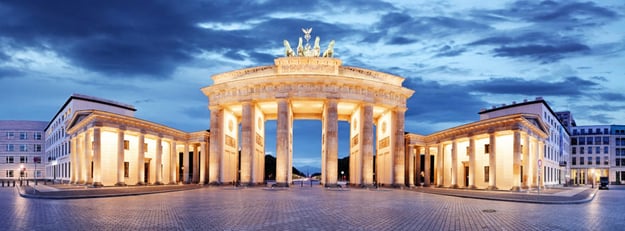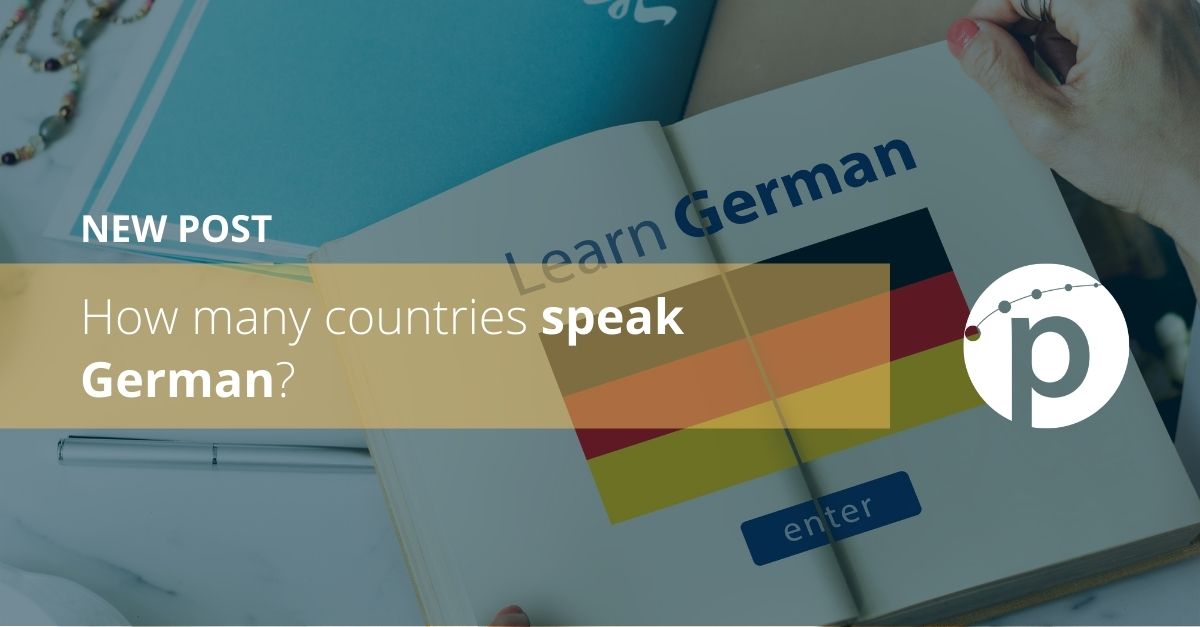German is the official language of Germany and Austria, and one of the official languages of Switzerland, where it is the spoken by the majority of the population. It is also spoken by a large percentage of the population in Liechtenstein and Luxembourg, and is an official language in Belgium.
The question of how many countries speak German depends on whether we count countries where German is official at a national level, at a local level or countries where German is spoken by immigrant communities.
With close to 100 million native speakers in Europe, German is the most spoken language on the continent (after Russian, with 110 million).
The six countries that have German as their official language, in alphabetical order, are: Austria, Belgium, Germany, Liechtenstein, Luxembourg and Switzerland. Over 78% of the world’s German speakers live in Germany. Over 8% live in Austria, more than 5% reside in Switzerland, less than 1% live in Italy, and more than 7% live in other countries.
How many countries speak German in Europe?
These are the countries where German is an official national language.-
- Germany
- Austria
- Belgium (statewide, along with Dutch and French)
- Liechtenstein
- Luxembourg (together with Luxembourgish and French)
- Switzerland: statewide (together with French, Italian and Romansh) This includes the 17 German-speaking cantons, the cantons of Bern, Fribourg and Valais (together with French), the canton of Graubünden (together with Italian and Romansh) and the municipality of Ederswiler at community level in the canton of Jura
There are 6 countries where German is an official national language and 4 countries where it is a local co-official language.
European countries where German is official at local level
- Italy in South Tyrol (together with Italian and sometimes also Ladino)
- Poland (as a national minority language in the Opole Voivodeship and Silesian Voivodeship in Poland, with around 300.000-350.000 speakers)
- Slovakia: German is also considered a co-official language under Slovak law in the villages of Krahule/Blaufuss and Kunesov/Kuneschhau, together with Slovak.
Other European countries with large German-speaking communities
There are other countries with sizable German-speaking minorities but where German is not official:-
- Russia (500,000 native German speakers)
- Kazakhstan (180,000 native German speakers)
- Hungary (62,000 native German speakers)
- Czech Republic (40,000 native German speakers)
- Romania (37,000 native German speakers)
In Scandinavia, a recognized minority of German speakers lives in Denmark (15,000 people). In France, an aging minority in Alsace Lorraine speaks mostly a very specific dialect, Elsässisch. In Spain, you'll find a community of roughly 50,000 Germans (mostly retirees, although there is also a growing community of working young Germans in Spanish cities). There are several German newspapers and radio stations in Spain (Costa Nachrichten, Mallorca Zeitung, etc.)
Keep reading: Discover the latest trends in the translation industry
The German language in Africa
Namibia was a German colony from 1884 to 1915. Around 20,000 Namibian Germans still live there, and German was one of South West Africa's three official languages up until 1990.How many countries speak German in America?
German is official in 9 municipalities in Brazil: in the states of Espírito Santo, Minas Gerais and Santa Catarina (together with Portuguese). Around 1.5 million Brazilians speak German nowadays.The German language in the United States
German is not official in any of the States, but there are some 46 million Americans who have full or partial German ancestry (2018 data). German Americans are the largest of the self-reported ancestry groups by the US Census Bureau in its American Community Survey. Some 19th century German immigrants have pursued their old way of living in the US, such as the Amish, Mennonite or Hutterite communities.

In Latin America, you can find pockets of German-speaking communities, mostly in South America:
- Argentina
- Brazil
- Chile
- Paraguay
In Venezuela, you still might find some people speaking Alemán Coloniero among each other. This German dialect and modern Standard German are not mutually intelligible. It is spoken by descendants of Germans from the Black Forest region that emigrated in 1843 to Venezuela after its independence.
The dialect has been heavily influenced by Spanish. But keep in mind that the longer German immigrants stay in the New World, the less the German they speak will be anything like the modern German nowadays spoken in the Berlin, Zurich, Munich, Cologne or Vienna of today. Some years ago, I was working for Rolls-Royce Industrial and Marine at a co-generation power plant as an on-site translator and training officer in Ushuaia and had to stop frequently in Buenos Aires. Waiting for a bus to leave, the driver seats himself next to me and immediately starts talking to another person. But he didn't speak with a distinct Argentine Spanish flow.
I really could not even understand nor recognize the language. Afterwards, I asked a fellow colleague (a local Argentine) what it was all about. He said that the bus driver's grandparents were Russian-German immigrants from late 19th century or early 20th century, when the choice to emigrate to Argentina or the USA was actually the same, as the country's economy was the 5th largest in the world. He was speaking German to a relative, but his German was based upon 16th century German dialects of people that settled in Russia.
So it was interwoven with Russian words and pronunciations. Three generations later, that dialect had been spiced up with Spanish words and an Argentine accent. Any Star Wars language might be as closely related to High German as his dialect!
At Pangeanic we are experts in translating texts into German. Contact us. We can help you and your company to stand out in the global market.




